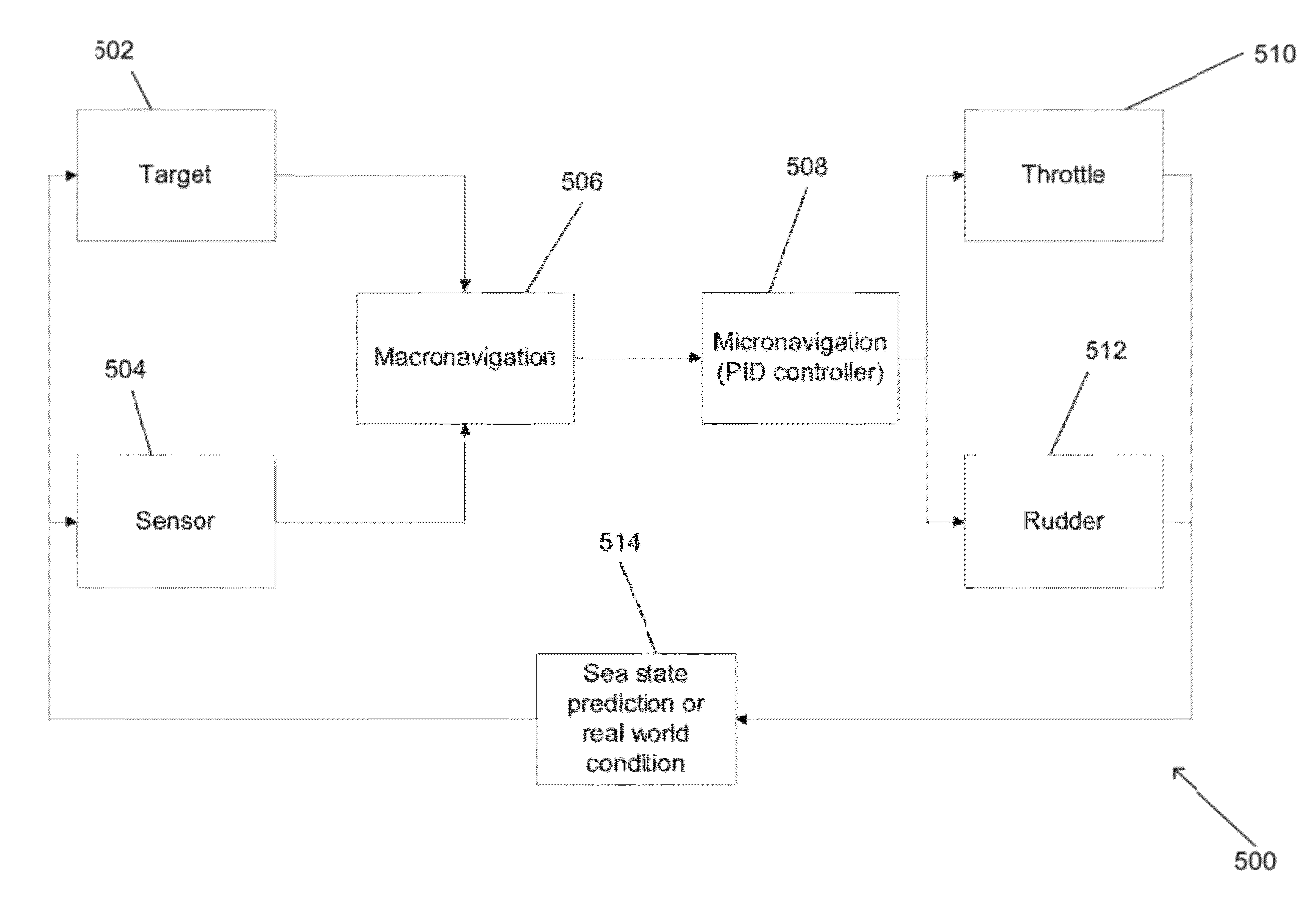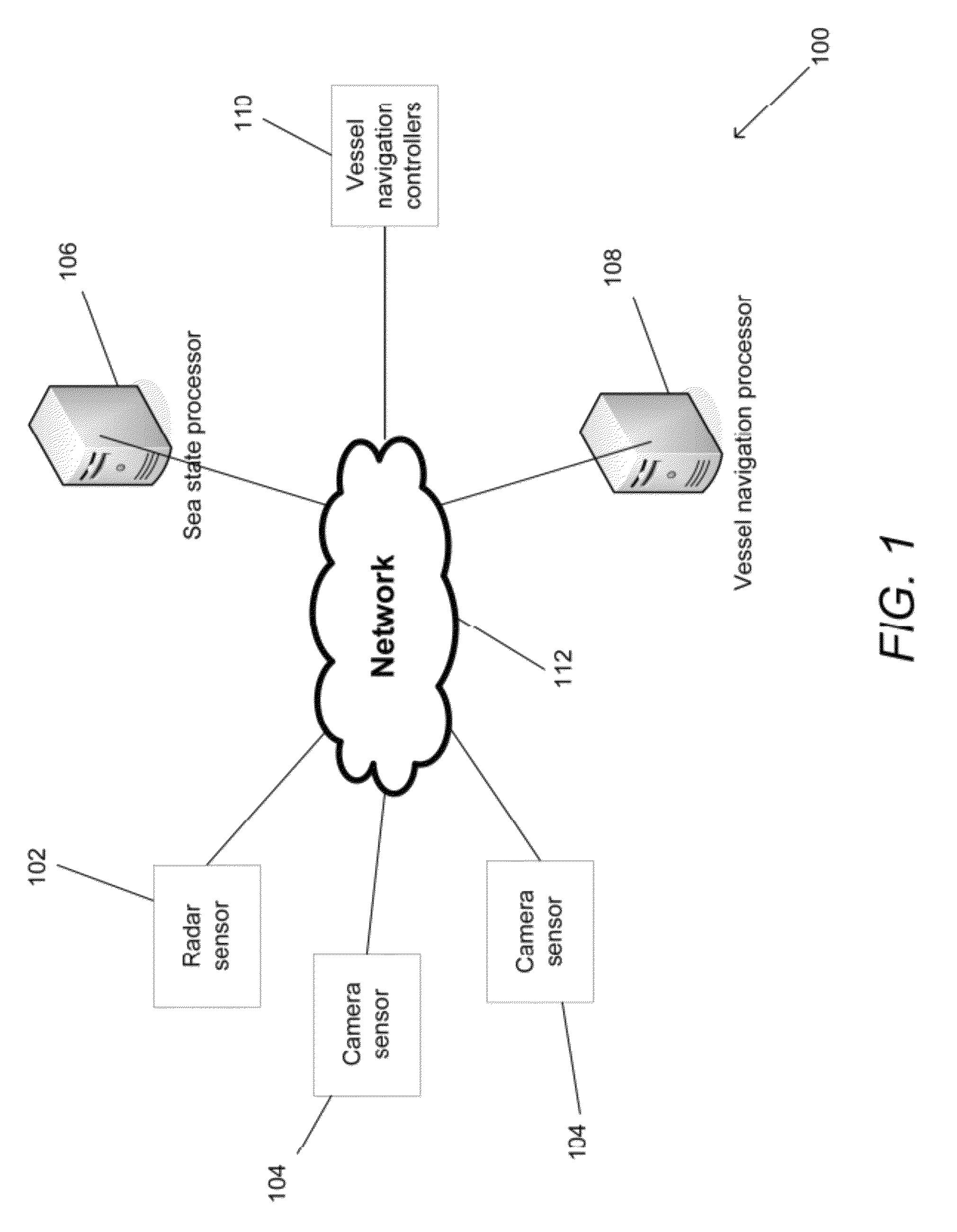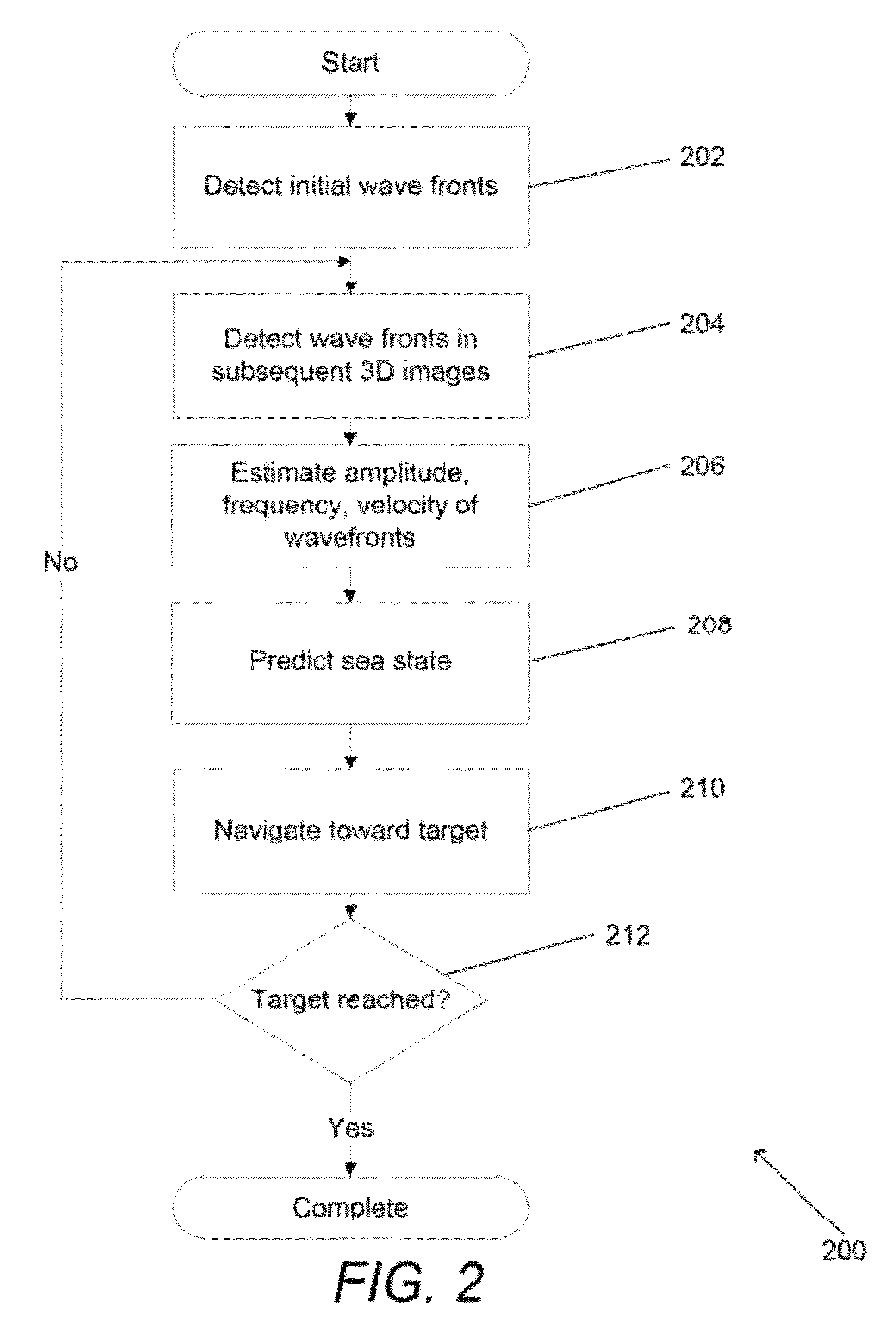Systems and methods for automated vessel navigation using sea state prediction
a technology of automatic vessel navigation and sea state prediction, applied in the direction of steering initiation, distance measurement, instruments, etc., can solve the problems of crew injuries, bow diving or other damage to the vessel, and vessel navigation on fluid surfaces such as the sea can be more difficult than vehicle navigation,
- Summary
- Abstract
- Description
- Claims
- Application Information
AI Technical Summary
Benefits of technology
Problems solved by technology
Method used
Image
Examples
Embodiment Construction
[0063]Turning now to the drawings, systems and methods for automated vessel navigation using predictions of sea state conditions are illustrated. In various embodiments, sensors capture 3D maps of the sea surface. From the 3D maps, a model for the sea state is found from which sea state predictions are made. Sea state predictions can be made by detecting the peaks and troughs of waves from a noisy signal. Using the sea state predictions, a vessel can be autonomously navigated to minimize the forces experienced by the vessel and its crew associated with severe sea conditions. In this way, autonomous navigation systems in accordance with embodiments of the invention can improve the speed with which a vessel can reach a target in severe sea conditions, while reducing the likelihood of damage to the vessel and / or crew. In many embodiments, the autonomous navigation system utilizes a number of subtargets calculated based upon a main wave direction (derived from a predicted sea state) and...
PUM
 Login to View More
Login to View More Abstract
Description
Claims
Application Information
 Login to View More
Login to View More - R&D
- Intellectual Property
- Life Sciences
- Materials
- Tech Scout
- Unparalleled Data Quality
- Higher Quality Content
- 60% Fewer Hallucinations
Browse by: Latest US Patents, China's latest patents, Technical Efficacy Thesaurus, Application Domain, Technology Topic, Popular Technical Reports.
© 2025 PatSnap. All rights reserved.Legal|Privacy policy|Modern Slavery Act Transparency Statement|Sitemap|About US| Contact US: help@patsnap.com



